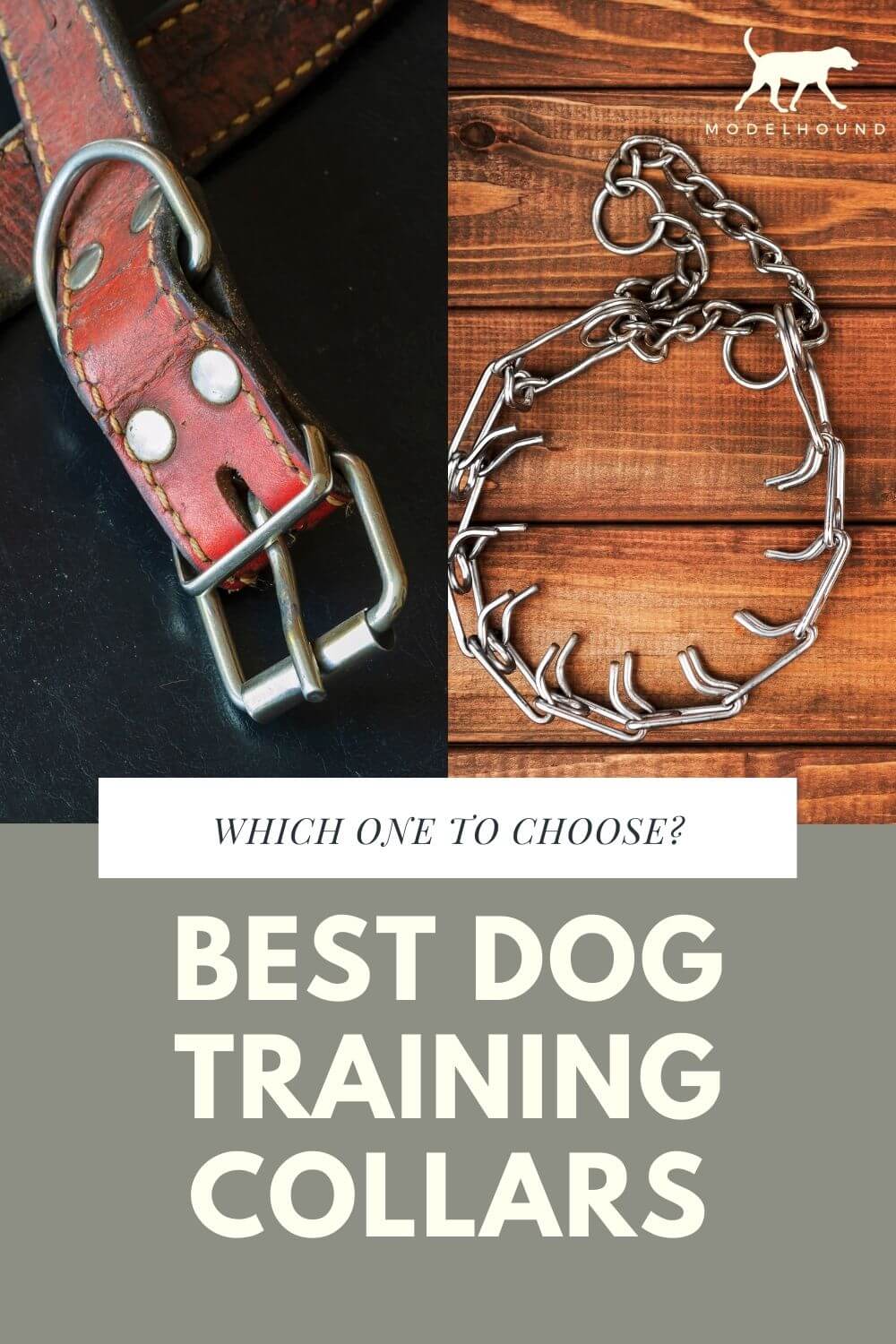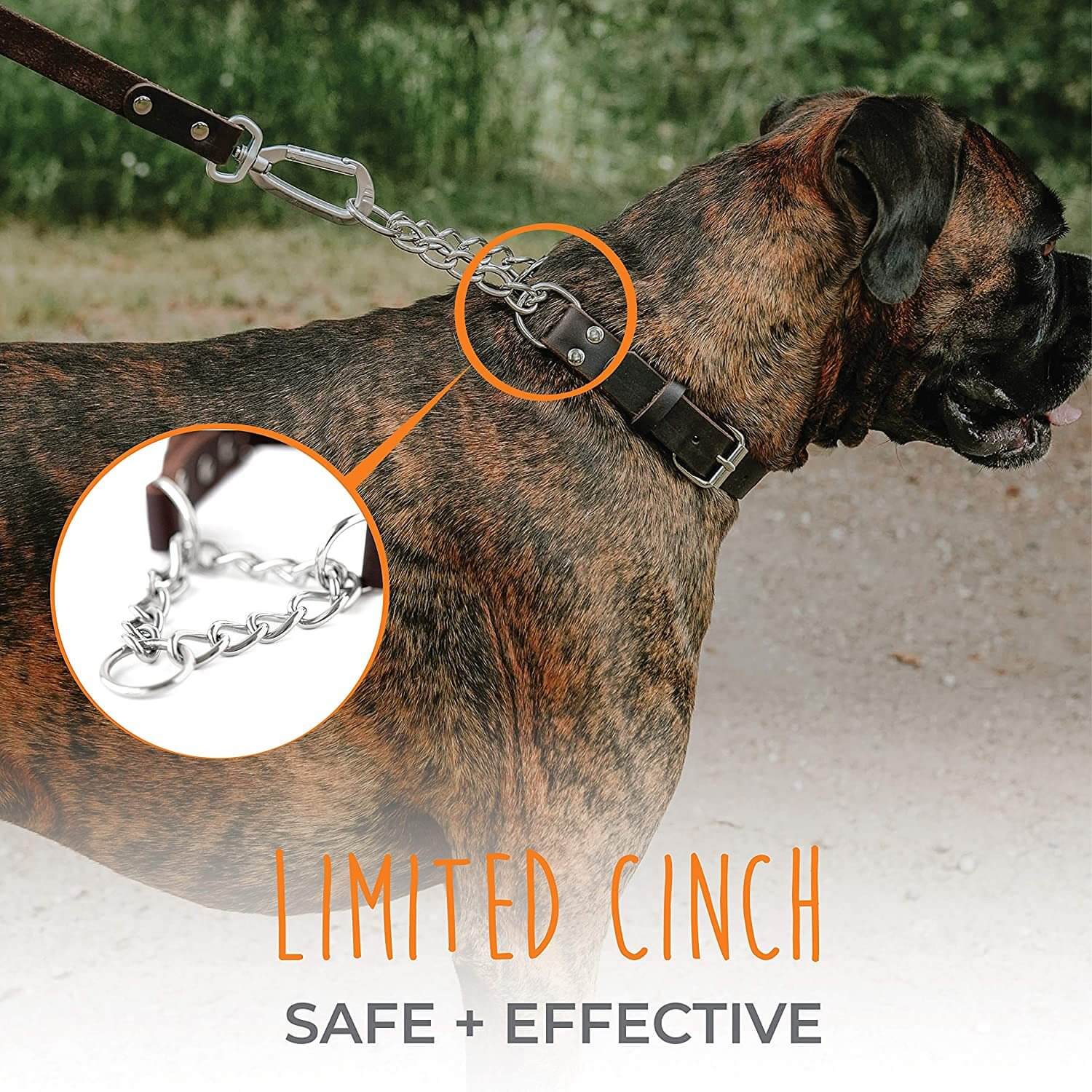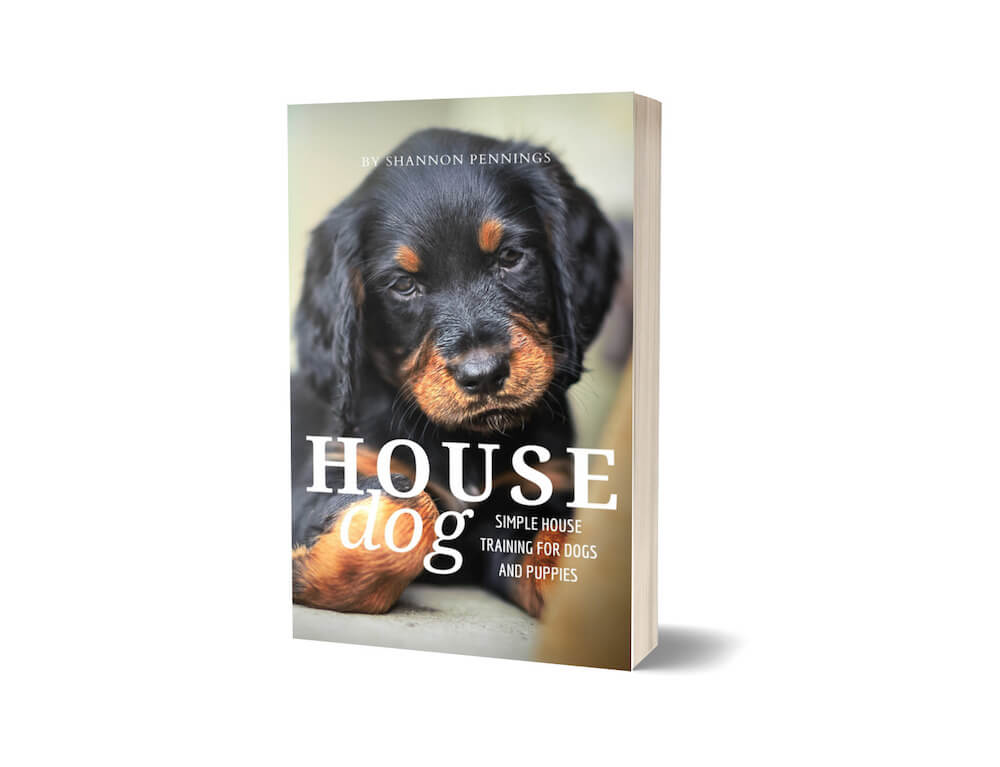The Best Dog Training Collar
for YOUR Dog
This post may contain affiliate links. We may earn money from the companies mentioned in this post.
Not all dog training collars are created equal. And not every collar is the best fit for every dog! Learn from a trainer how to pick the best, and why...
Just take a trip to any pet store or even Walmart, and you'll be amazed at the wide variety of collars available! Standing in front of the store racks, it's easy to feel overwhelmed by all the options.
And understandably. With next to no advice about how to properly use
them, other than what the pet store staff member (who is almost always
unqualified to do so, no offense) may try to explain, you are left to sink or swim
on your own.
Not all collars are created equal, but you can't be expected to know everything about all these different training tools...
Don't worry! As a certified dog trainer, I can steer you in the right direction, showing you which collars I use myself and which ones you should avoid.
I'll even give you my best recommendations for different ages of dog, as well as how to choose a collar based on your dog's temperament (not size).
First up...
Flat Buckle Collar
This is the collar that most people are familiar with. It is
simply a strip of leather, nylon or a similar material that goes around
the dog's neck and is fastened with either a buckle or a clip.
Pretty simple to figure out!
I use this dog training collar for tying dogs up, should the need ever arise, as they can't hurt themselves on it.
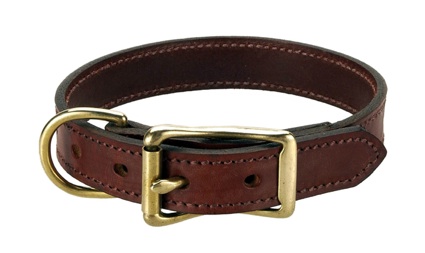 Leather flat buckle collar.
Leather flat buckle collar.It's also a good choice for training puppies under 3 months of age, as well as very 'soft', introverted, meek dogs (i.e. rescue dogs that have been abused).
I only use flat-buckle collars that have metal hardware, as the plastic clips are weak and tend to pop open when sudden pressure is applied (i.e. your dog lunges after a squirrel)!
There are so many great options out there. If you're looking for a nylon collar, this one from Mighty Paw is just about perfect. Strong metal hardware, reflective stitching, neoprene padding... the list goes on!
Another great one that I love is a biothane waterproof collar. No more stinky dog collar, as it's waterproof and odor-resistant.
And the icing on the cake? You can trim it to whatever size you need as the material is easy to cut through and won't fray! Our pup Milo has a biothane flat-buckle collar.
Martingale Dog Training Collar
Somewhat similar to a flat-buckle, this dog training collar is typically made of nylon or leather, which goes part-way around the dogs' neck. I'm starting to see them made with biothane lately, too.
The remainder is made of chain, which can be loosened and tightened with a flick of the wrist.
It comes in different sizes, from small to large and sometimes extra large.
Most martingale training collars are adjustable, which can also be a potential drawback - you need to loosen and tighten it each time you put it on or take it off your dog.
While you can buy collars with a plastic quick-release clip, these are more likely to pop open than one that has a secure belt buckle style closure, or one with no quick-release at all.
I highly recommend the belt buckle style quick-release martingale shown above here, from Mighty Paw! It's made of classic leather that will age beautifully.
I recommend using this type of collar only for dogs over 3 months old.
Prong Collar
Sometimes called a "pinch" collar, it doesn't actually pinch your dog, or shouldn't, if it's a high quality prong collar. The links go all the way around your dog's neck so the pressure is distributed evenly instead of constantly being applied to the same spot on his neck (like a choke chain).
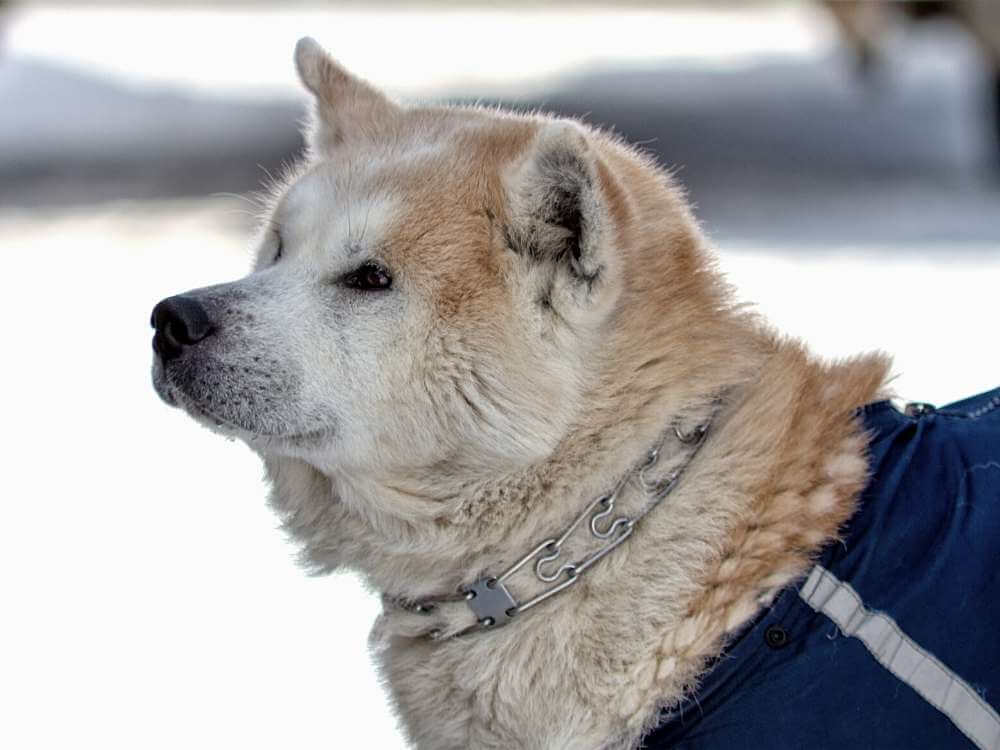 A prong dog training collar.
A prong dog training collar.This dog training collar comes in different link sizes. Just because you have a large dog, doesn't mean that you need a large link prong, though!
Contrary to what the pet store staff member may tell you, the smaller the link, the firmer the correction. This is because the links are closer together (more pressure points).
A correction can easily be given with a simple flick of the wrist, so not much muscle is needed to train your dog.
Your dog will never outgrow this dog training collar, as links can be added or removed as needed.
If you have trouble putting it on your dog,
you can buy one with a quick release. However, a typical quick release also means that it is easy to accidentally remove the collar while training... not helpful if your dog has a tendency to run away!
Always buy a collar that has round-tipped links - like this prong collar - as opposed to flat tipped ones. Round-tip links are smooth, and won't hurt your dog's skin or damage their fur. Best quality? Herm Sprenger prong collars, hands down!
Never crate or leave your dog alone with a prong collar on because a paw could get caught under it and injure him, making him afraid of it!
Many people assume that a prong collar is only used for large, strong dogs. This isn't true at all! It all depends on your dog's temperament.
You
could have a huge Bullmastiff that has a soft temperament, which I
would likely train using a martingale collar. On the
other hand, you may have a small but feisty Jack Russell that I would
train using a prong collar.
I use these collars on dogs over 3
months old. They are very humane... when used properly, of course, like all tools.
Triple Crown or Good Dog Collar
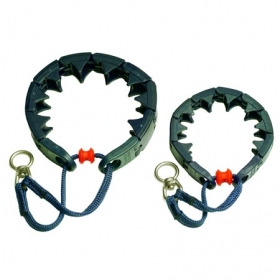 A plastic triple crown training collar.
A plastic triple crown training collar.This dog training collar is actually just a prong collar, but with a plastic casing that covers the prong. I don't use this type of collar.
Why a prong and not this one?
The reason is because the plastic tends to pop open very easily, making them not very reliable (imagine - your dog lunges at a squirrel... and the collar pops open, leaving your dog on the loose).
Choke Chain
Most people can name this collar on sight, as a lot of people use them. A type of this collar is often used for showing dogs as well. This dog training collar is a chain that goes completely around the dog's neck, with two rings at the top.
To properly put on your dog - remember, P for puppy. When you hold it up, ready to go on your dog's neck, it should form a P, with one ring at the bottom of the P, and the other half way up the long stick of the P. Otherwise it won't release after a correction and will choke the dog.
I don't use this type of dog training collar either, because corrections are hard to give with it (especially for novice trainers) and it tends to damage your dog's fur.
Gentle Leader
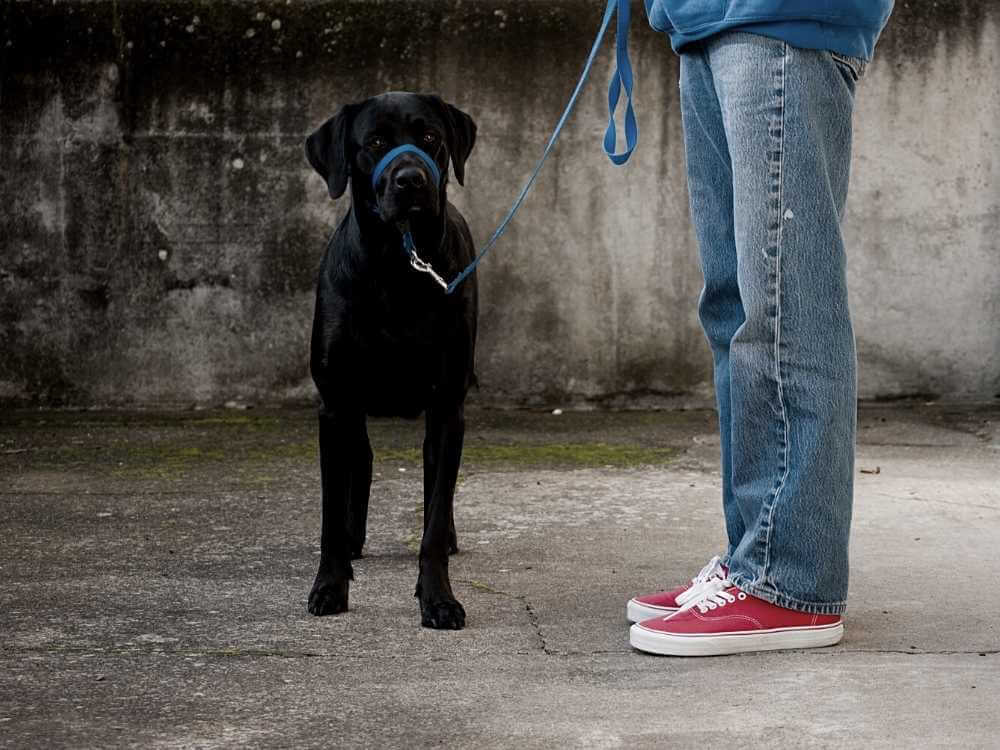 Trying to train a dog using a Gentle Leader or other head halter can be harmful to your dog's neck and spine!
Trying to train a dog using a Gentle Leader or other head halter can be harmful to your dog's neck and spine!This is actually not even a dog training collar, but a head halter, like what a horse wears. With a nylon strap going around the dog's neck and one around his muzzle, it steers the dog in the direction you desire.
I do not use or recommend this type of device, as it restrains the dog beside you instead of training him to follow you.
A dog will usually spend so much effort trying to paw and rub it off his muzzle that any learning is hard to come by.
Also, it tightens and pulls the dog's head to one side whenever he tries to pull ahead of you, which is not safe for his neck and spine.
If
your dog ever lunged after a squirrel or jumped to greet someone on the
street, the result of jerking his head to the side like that can cause
neck and spinal injury. This also means that you can never safely give a correction using this tool.
Lupi Harness
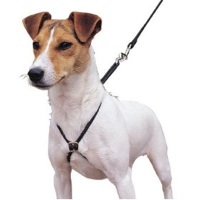 A Lupi harness is not a recommended dog training tool.
A Lupi harness is not a recommended dog training tool.Another device, the Lupi is a dog harness that "hobbles" your dog's front legs. Whenever he tries to pull, the harness tightens around his legs. It is also a restraining device, like the Gentle Leader.
Once the harness comes off, your dog can immediately feel the difference between that and a regular collar, and the unwanted pulling will come back immediately. It does not train your dog, but restrains him.
And you guessed it - I don't train with these either!
By now you may have noticed that I only use dog training collars that are humane, non-restrictive or restraining, and that can be phased out to a flat-buckle or no collar once the dog is properly trained.
Don't expect this to happen overnight! Like all good things, it takes time.
E-Collar or Electronic Dog Collar
I call this an "invisible leash" - a leash does not attach to the collar. Worn snugly around the dog's neck, it has two posts that should touch the dog's skin.
When a button on the remote transmitter is pressed, a static correction is given to the dog. The correction is basically a muscle stimulus that the dog will feel around his neck.
Worried that you'll hurt your dog? Try it on your hand - I do! What you will feel is similar to what you feel when you get a shock after touching a door knob (static). It is completely humane. I would never use it if it wasn't.
Yes, that's right... I use these remote training dog collars as well! Do not use this type of collar until your dog has been trained for at least 6 months, and understands what you are asking of him.
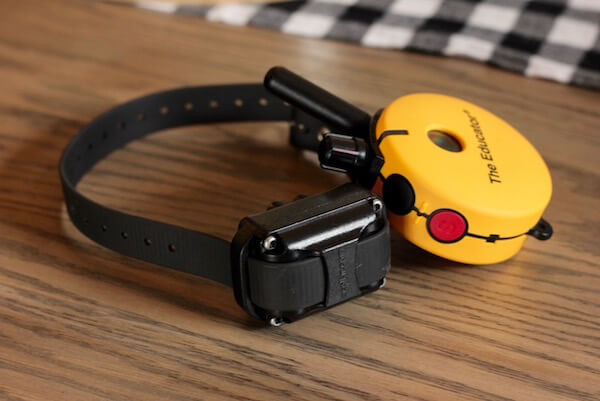 The Educator from E Collar Technologies is my choice of remote training collar for our Cockapoo, Milo.
The Educator from E Collar Technologies is my choice of remote training collar for our Cockapoo, Milo.I use them with intermediate and advanced dog training, and when we start doing off-leash obedience, such as long distance recalls. It's also great for troubleshooting behavior problems such as aggression.
Once again, in the proper hands they are wonderful tools to further a dog's obedience training. Please don't attempt to use this collar without professional training!
Anti-bark Collar
This last type of dog training collar that we'll look at is an anti-bark collar. It's hands-free, and doesn't require you to push a button for a correction to occur.
When your dog barks, the sensor on the little box under your dog's chin causes it to automatically correct the dog.
There are different types of anti-bark collars. A citronella anti-bark collar is good for 'softer' dogs - it sprays citronella upwards in front of his face, startling him into being quiet.
An electronic anti-bark collar is better for a more persistent, 'harder' dog. As with the citronella collar, it corrects the dog automatically when he barks, using a muscle stimulus correction (like the e-collar).
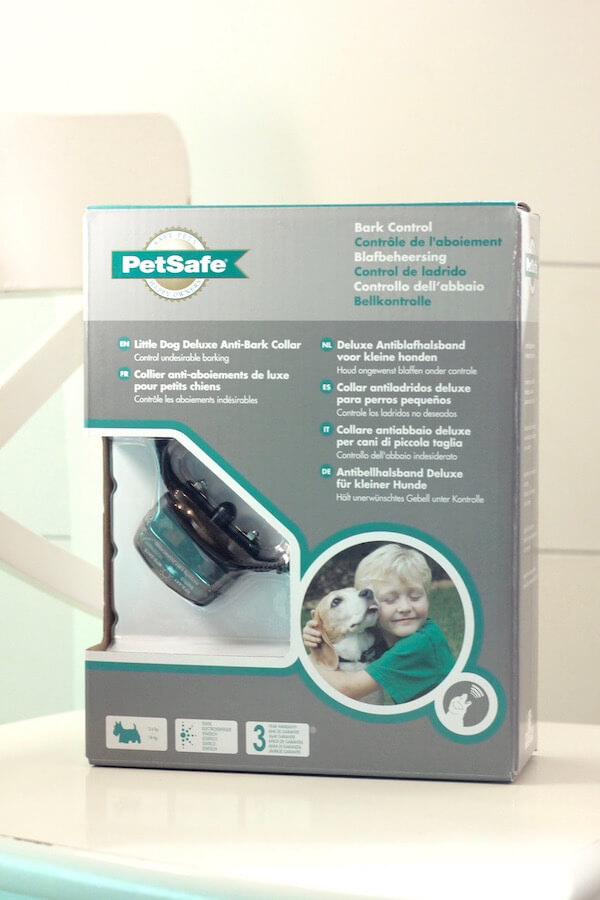
Both of these collars work well, and I often recommend them for dog barking control. We've recently purchased the Pet Safe brand Little Dog Deluxe Anti-bark Collar for our 2 year old Cockapoo, and I'm pretty happy with it.
I tried a few other brands and models, but this one seems to be the best that I could find for a small dog, as it's pretty small and light.
Keep in mind, in order for an electronic collar to work, the two contact posts on the collar need to be making contact with your pup's skin! This means that the collar should be quite snug on his neck.
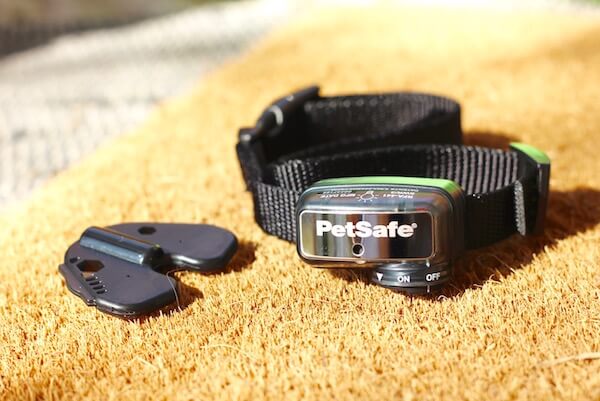 The PetSafe Little Dog Deluxe Anti-bark Collar is what I use for our Cockapoo.
The PetSafe Little Dog Deluxe Anti-bark Collar is what I use for our Cockapoo.
I hope this helps you to understand the different types of dog training collars available, and gives you confidence in purchasing the right dog training collar for your pup. Don't forget - you can always switch to a different collar if your first choice doesn't seem to be working well for your dog!
Want an easy way to keep up-to-date on new training articles that are added to our site? Sign up for "The Yellow Hydrant", a monthly selection of dog tips and techniques that is only for subscribers! Best part... it's totally free! To join the rest of the dog people, fill out the form below.
- Home
- Training Tools
- Collars
